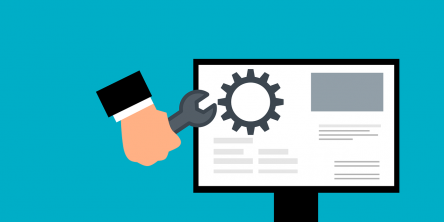The 4 Biggest Alternative Blockchain Network Protocols

Blockchain according to the developer of Bitcoin Satoshi Nakamoto, is a chain of blocks. In general terms, blockchain is a distributed ledger where transaction details are recorded in a secure, permanent, and in a verifiable manner.
The blockchain technology has been referred to as the most innovative and advanced technology in the world now. It is a fully decentralized platform with added records and security capability. The blockchain technology is also a secure one as it makes use of certain technologies like the Byzantine Tolerance mechanism.
Blockchain technology has been adopted and used in various industries and sectors of the economy such as cloud storage, hosting, healthcare, real estate, etc and Bitcoin happens to be the first case use of this technology and since 2009, it has been used for other platforms.
To fully understand how the blockchain works it is important that we describe it as a register. The register containing several pages that are referred to as "blocks", and each of these pages contains transactions. If all pages (blocks) on the register (chain) are filled with transactions it must be added to the register before another page is recorded.
Before any block can be added on the chain, processing will be done to ensure that all parties agree on the information recorded on the chain. It will take about ten minutes for each block to be processed. This has been the major problem of the Bitcoin network.
A transaction fee is paid by users who want to speed up their block processing. These fees are not fixed and it depends on how much each user is willing to pay to speed up the processing speed. These reasons mentioned above are why blockchains are slow and also expensive and this is the reason why other blockchain companies are stepping in to create their own versions.
In this article, we will discuss other networks that the blockchain technology has been adopted and used for.
Ethereum
Ethereum happens to be the second-largest cryptocurrency platform based on its total market capital value. It is a fully decentralized platform that allows for the development of decentralized applications (DApps) and also smart contracts with little or no interference from third parties or intermediaries. This blockchain-based project has its native cryptocurrency as Ether and it has specially designed wallets that can be used to store Ethereum Request Comment (ERC-20) tokens. Decentralized applications are not only created on this blockchain network, but decentralized autonomous organizations are also created and launched on the platform.
Ripple (XRP)
Ripple Launched in 2012, this blockchain-based platform is a decentralized crypto platform that makes use of a distributed open-source consensus ledger and its native crypto token known as XRP. This platform has been described as a payment settlement platform that can carry out fast inter-country transactions. This platform was developed to help banks and other payment gateways by providing them with the needed platform that will allow them to make secure, fast, and cheap transactions across borders. It does this with its crypto token called XRP. This platform happens to be one of the top cryptocurrency platforms in the world based on market capital value.
Hyperledger
Hyperledger was developed in 2015 by the Linux Foundation, this blockchain-based platform solely focuses on ledgers which are targeted at enhancing international transactions and also catering to the needs of leading financial supply chain businesses. The effort of this platform seeks to bring in individuals from different industries and sectors of the economy together in order to advance the blockchain technology. Since its inception, it has developed many projects and more are expected to come in the future. Some of the main features of this blockchain-based project are; creation of a channel that will enhance the sharing of private information, endorsement of transaction policies, and a list of others.
OpenChain
This blockchain protocol is different from that of the others mentioned above. Everyone on the network can spin off instances and every user will have the authority to validate transactions. This means that not just one single ledger will validate transactions but all on the network will be given such authority. On the network, different authority validates different transactions and they all depend on the type of asset that is been exchanged.
Similar Articles
Startup success depends on fast product development of innovative concepts to create tangible products that help establish competitive advantages
The broad spectrum of industries across the globe is under unprecedented pressure to optimize their operations. And maximize profits, of course. The rise of cloud computing, particularly platforms such as Microsoft Azure, has created incredible opportunities. Unfortunately, it has also made managing IT spending a tad complex
Global markets are becoming more interconnected and quite evidently at that. The result? Shorter product lifecycles have led to unprecedented pressure for businesses to optimize operations. And maintain a competitive advantage, of course.
Using the power of big data analytics can change the way businesses operate. Analysis of large datasets lets companies gain detailed information about their customers and markets, allowing them to remain competitive.
The market is brimming with all sorts of software solutions and whatnot. Yet, software as a service has managed to establish itself as the dominant software delivery model. Businesses are now increasingly switching to cloud apps to improve efficiency and drive innovation. And embracing SaaS is driving an increase in demand for adaptable and scalable software solutions
The global conveyor system market, valued at $6.4 million in 2024, is likely to reach $11 million by 2034.
Content has permanently changed. We essentially have the digital revolution to thank for it. You see, how content is created and consumed has been fundamentally transformed.
Explore how enterprise software simplifies complex testing with secure, scalable solutions, streamlining exam creation, administration, and data management for institutions.
Using fiber optic technology, HDMI cables can transmit video and audio signals without compromising on quality over extensive distances.









